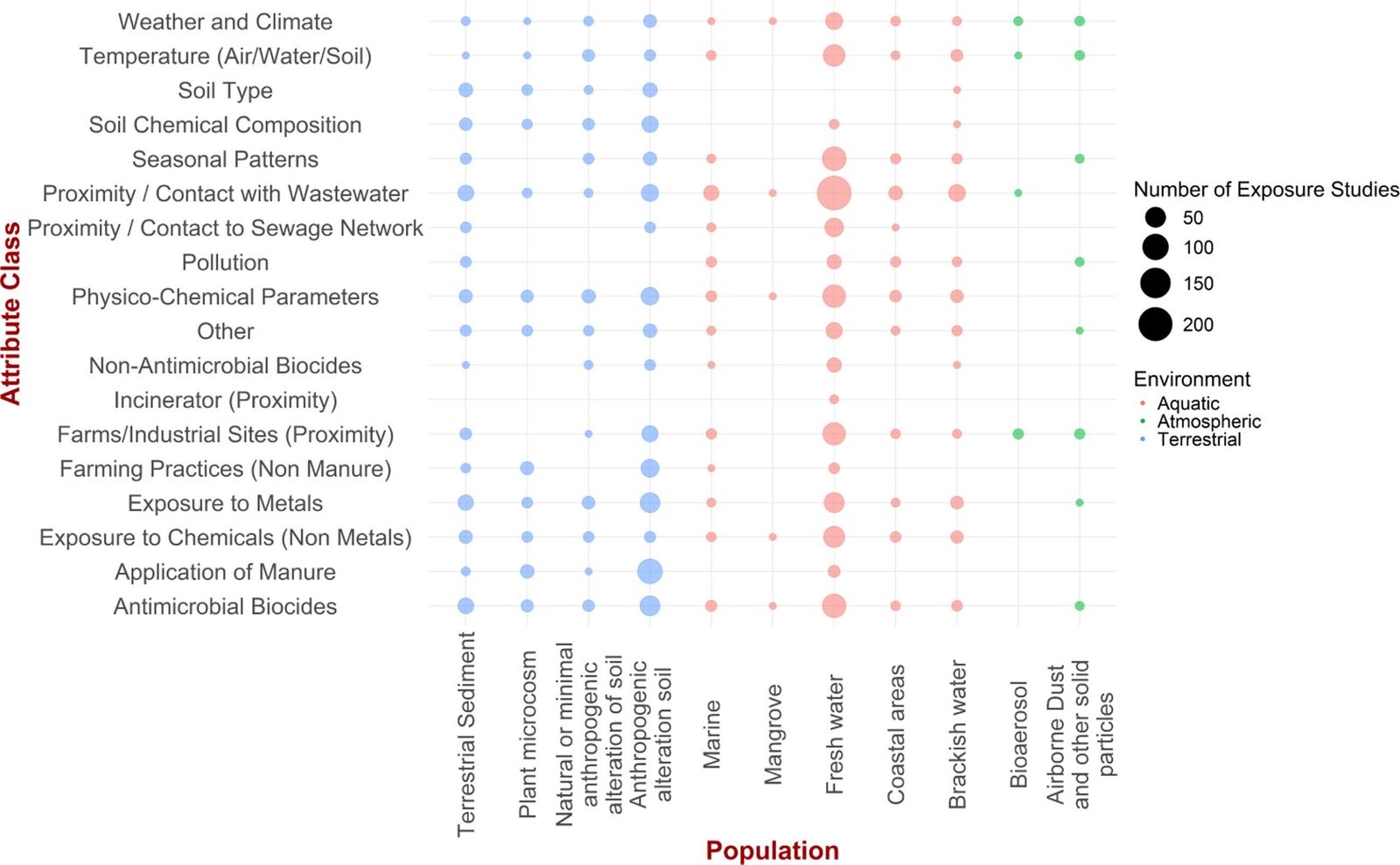
Antibiotic resistance in the environment is a growing and largely overlooked crisis receiving inconsistent attention that may very well have dire consequences for human health, according to a new study led by the University of Surrey.
The comprehensive review, published in Environment International, researched 13,000 studies from 1990 to 2021 to identify patterns and gaps in the topic area. The team identified 738 studies that focused strictly on non-built, non-industrial environments, such as rivers, fields and air.
The researchers found that antibiotic-resistant bacteria are most often detected in freshwater and soil, particularly in places exposed to pollution from wastewater or manure. Two bacteria—Escherichia coli and Pseudomonas—were the most studied organisms, while genes conferring resistance to medicines including sulfonamides, tetracyclines and beta-lactams were very prominent.
Worryingly, very few studies have explored how antibiotic resistance spreads in the air, oceans or green spaces. The team also highlighted a lack of research in low-income regions, where the health burden of antibiotic resistance is likely to be highest.
Dr. Brian Gardner, Research Fellow in Computational Biology at the University of Surrey, said, “Despite a growing body of research, our study confirms that we know frighteningly little about how antibiotic resistance behaves in certain regions and environmental contexts. This is a silent emergency, and unless the scientific community works quickly to plug this knowledge gap, we risk letting antibiotic resistance spread unchecked in places we’re not appropriately monitoring.”
The Surrey team also found that one-third of the studies came from China, followed by the United States. But fewer than 1% were led by researchers in low-income countries, such as Afghanistan, Ethiopia, Mali and Uganda, despite these areas facing some of the greatest health risks from antibiotic resistance. Climate change and microplastics were also strikingly absent from the evidence base.
While this trend may have shifted in the last couple of years, given the rapid evolution of the field, it is unlikely to have changed substantially, leaving critical questions unanswered about how environmental shifts may be accelerating the problem.
Dr. Gianni Lo Iacono, Senior Lecturer in Biostatistics/Epidemiology at the University of Surrey, said, “This research was only possible thanks to the formidable contributions of 55 colleagues, whose expertise and commitment were indispensable. Our findings highlight an urgent need for more research in low-income regions, which face higher risks of antibiotic resistance but are severely underrepresented in current studies.
“To truly combat antibiotic resistance globally, we must broaden our research scope to include diverse environments and geographic regions, particularly those most vulnerable.”
More information:
Iñaki Deza-Cruz et al, Mapping the evidence of the effects of environmental factors on the prevalence of antibiotic resistance in the non-built environment, Environment International (2025). DOI: 10.1016/j.envint.2025.109634
Provided by
University of Surrey
Citation:
Environmental antibiotic resistance is unevenly addressed despite growing global risk, study finds (2025, August 7)
retrieved 7 August 2025
from https://phys.org/news/2025-08-environmental-antibiotic-resistance-unevenly-global.html
This document is subject to copyright. Apart from any fair dealing for the purpose of private study or research, no
part may be reproduced without the written permission. The content is provided for information purposes only.




